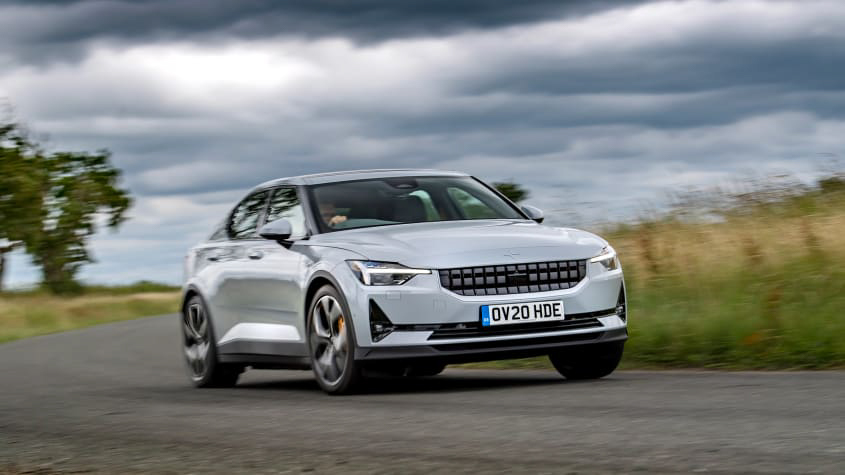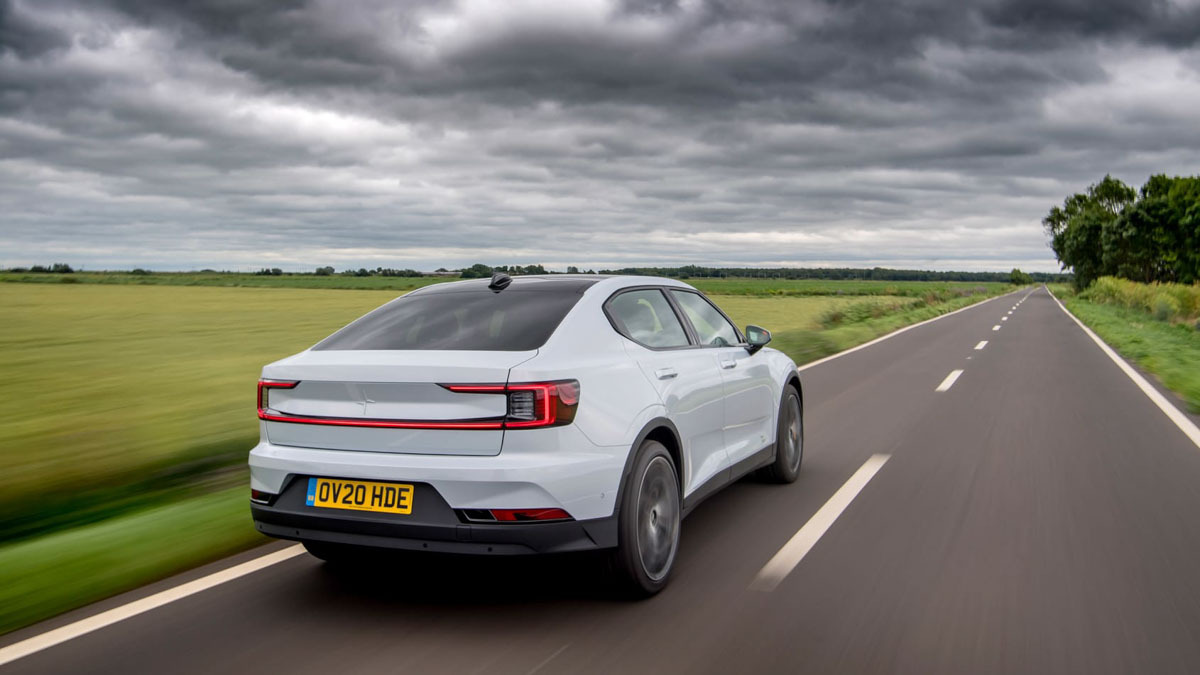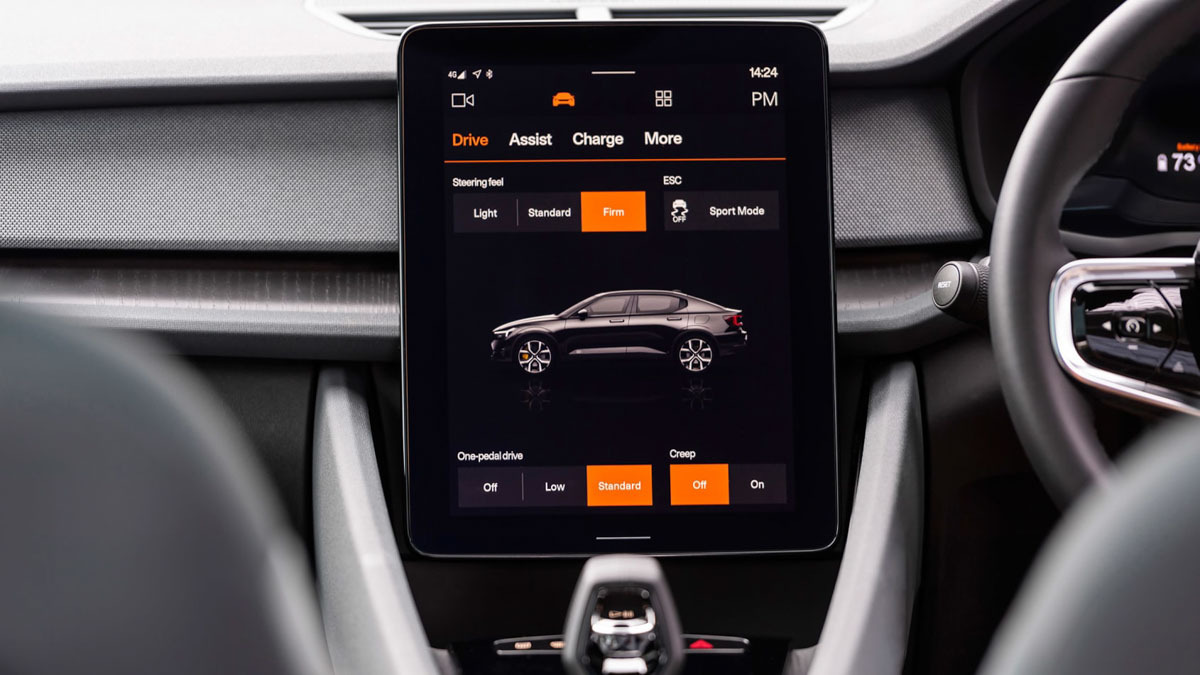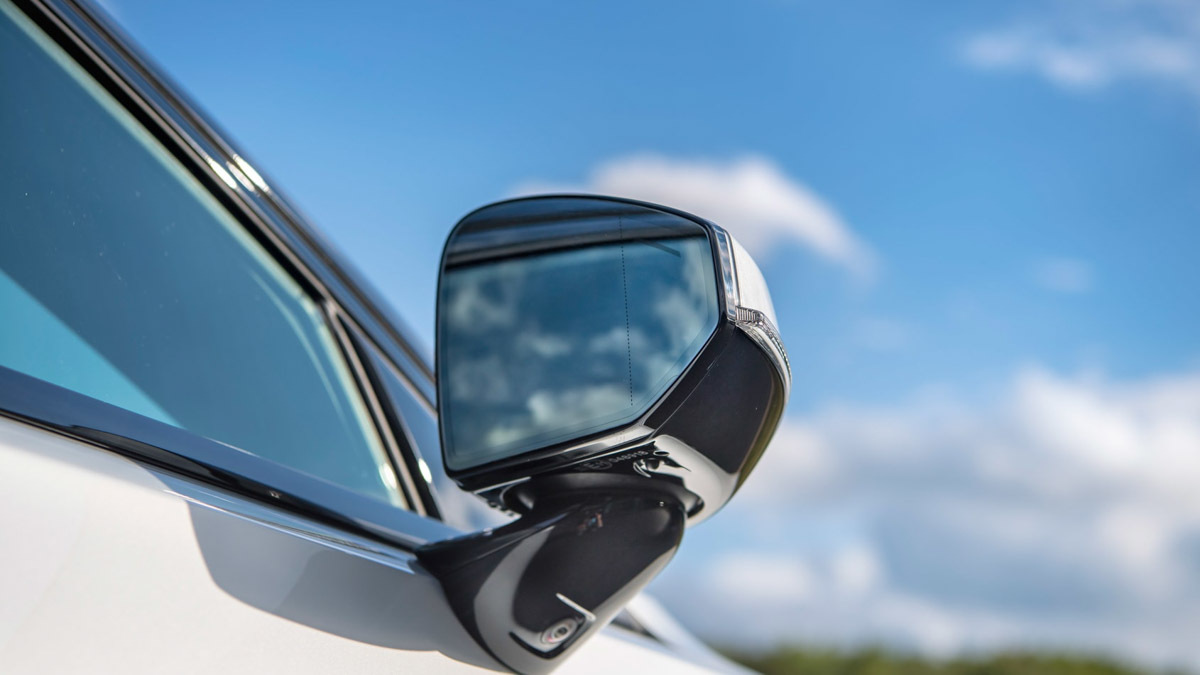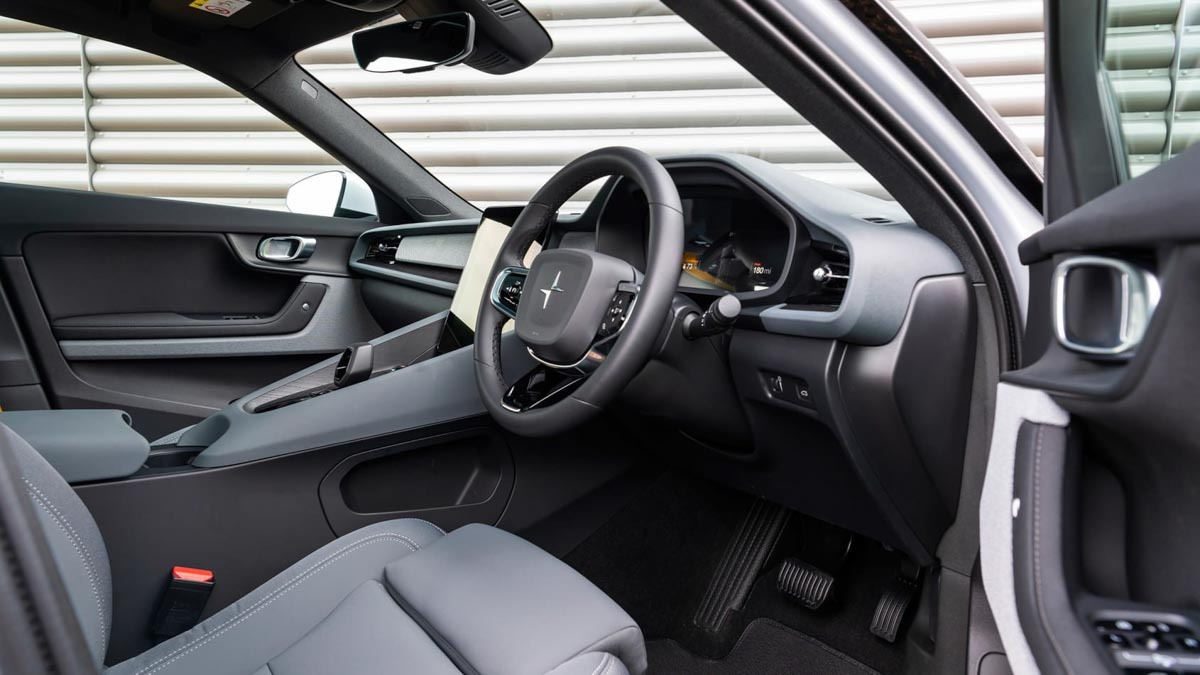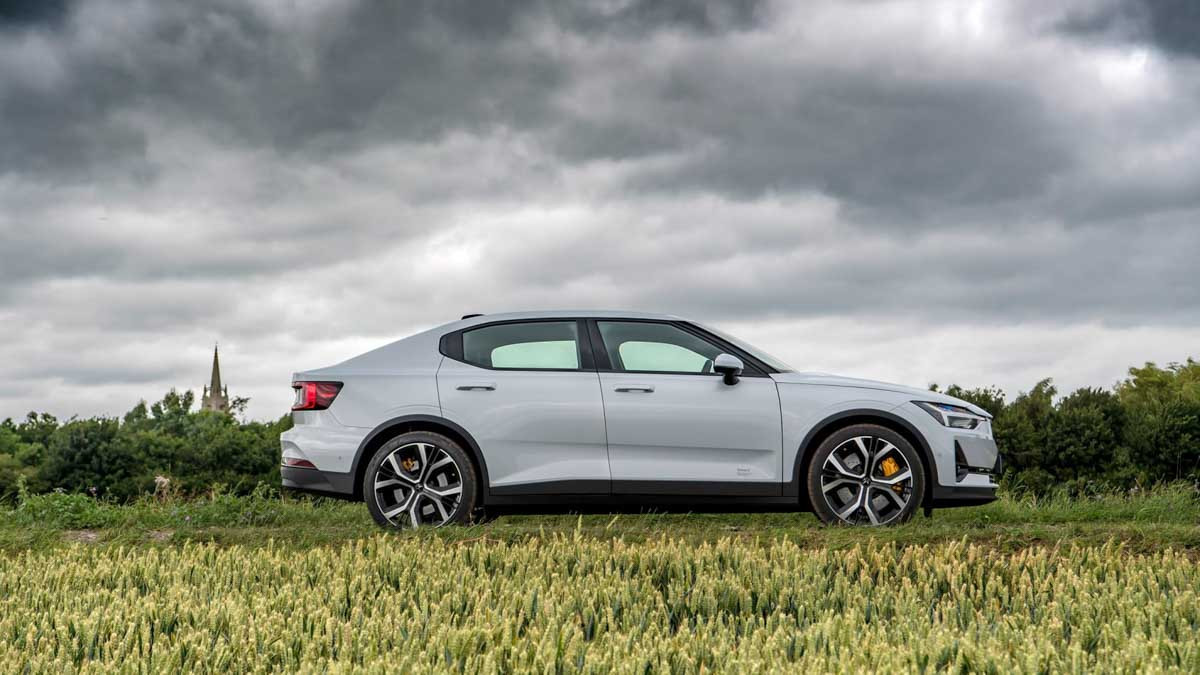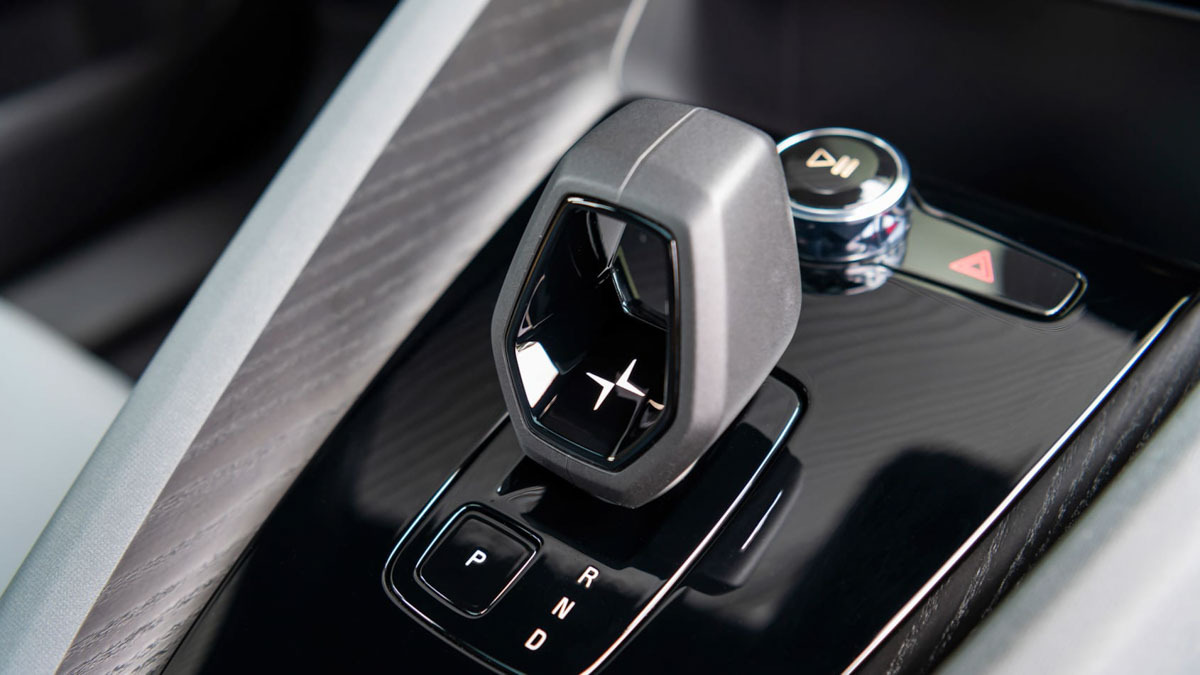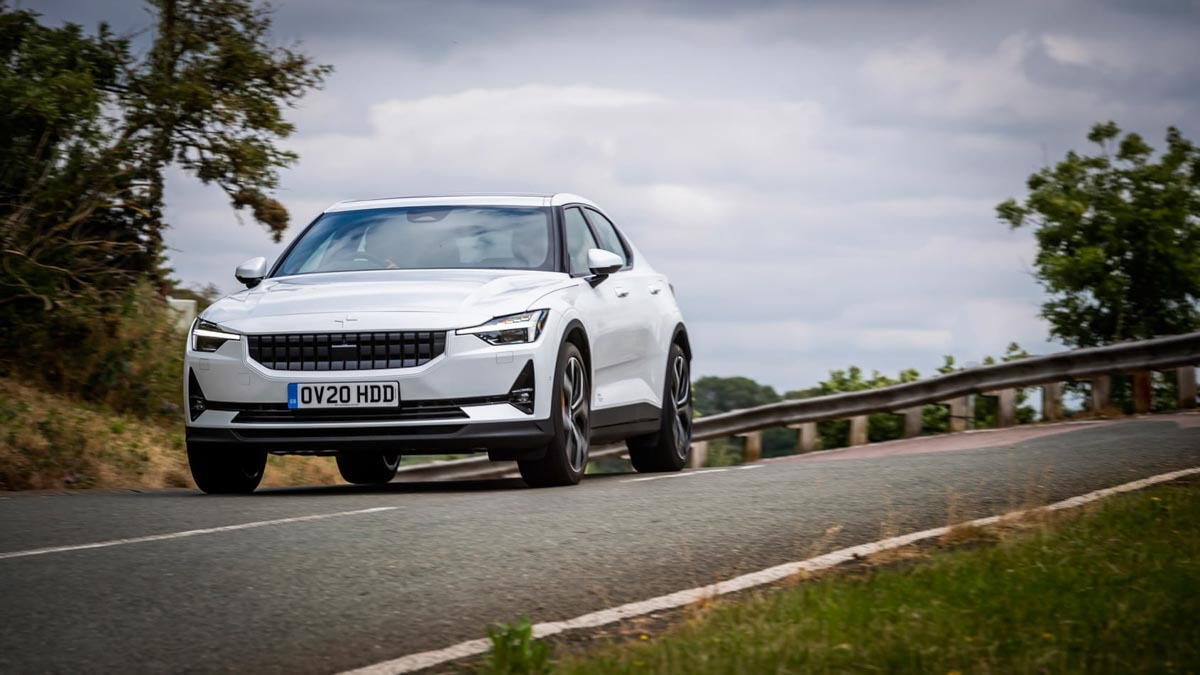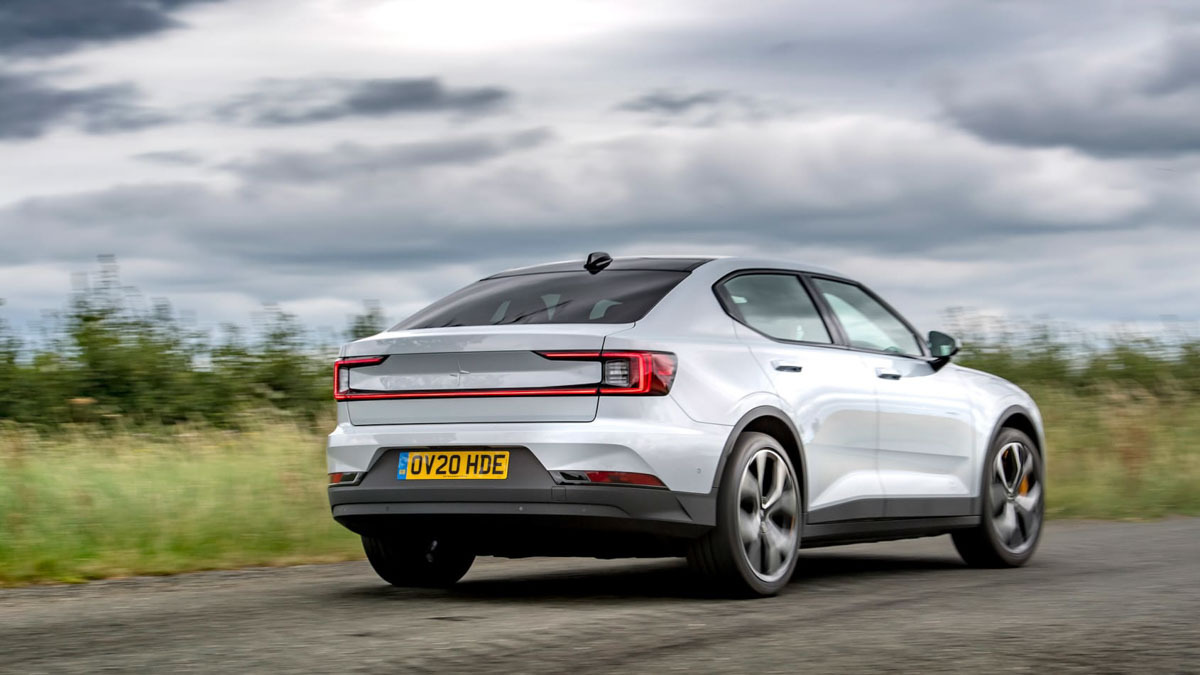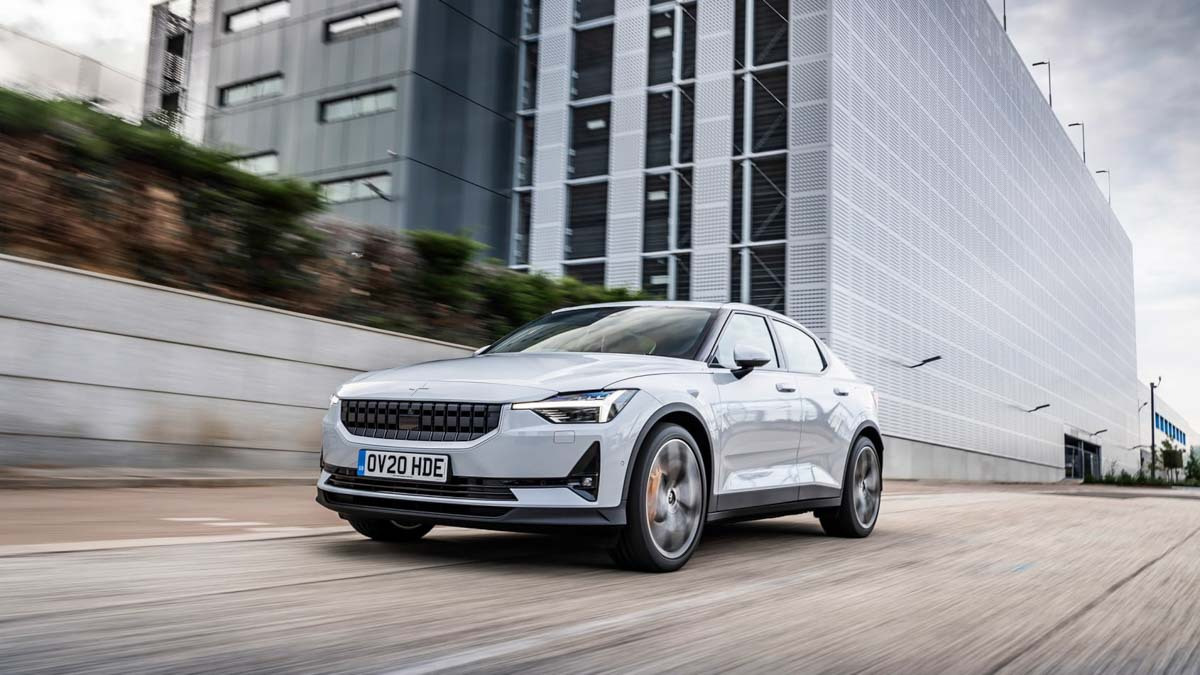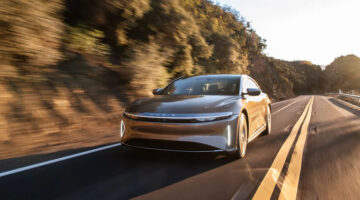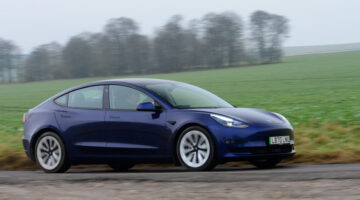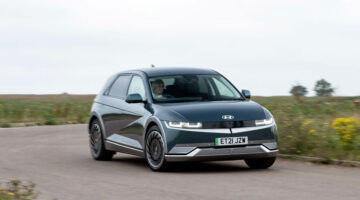Another sign electric cars are maturing to become competent and clever. But while the Polestar 2 makes a great everyday car, it’s still no performance hero
| A very capable, polished and contemporary example of an excellent electric car | |
| It still has a fair way to go before becoming an excellent performance car |
It’s rare that you get the chance to experience the first impression of not just a new model, but also a new brand. Granted, as the name might suggest, this is the second model to come from Volvo’s now completely separate performance brand, but while the expensive, limited-run plug-in Polestar 1 was an attractive halo model for the marque, it’s the all-electric Polestar 2 that’s a more representative example of where the fresh Swedish brand is headed.
So what we have in effect here is a slightly high-riding, five-door, all-electric hatchback that plays the role both of mass-market leader and rival disruptor to the Tesla Model 3. Starting at just under $65,000, the Polestar 2 will be launched with a 400bhp electric powertrain, all-wheel drive and single high-standard specification in order to rival mid-level Model 3s.
The model we’re driving today includes the Performance Pack, which brings high-end Öhlins dampers and a chunky Brembo brake package to the party, amongst other equipment upgrades, but the question of what the Polestar 2 actually is here is less relevant than the big one facing it.
As the first heavyweight rival to the Model 3, is the Polestar 2 the car it needs to be in order to upset the status quo that Tesla has so very effectively established both in the local and abroad? Tesla Model 3 sales are extremely strong, but it still has plenty of flaws for a competitor to swoop in and steal its thunder.
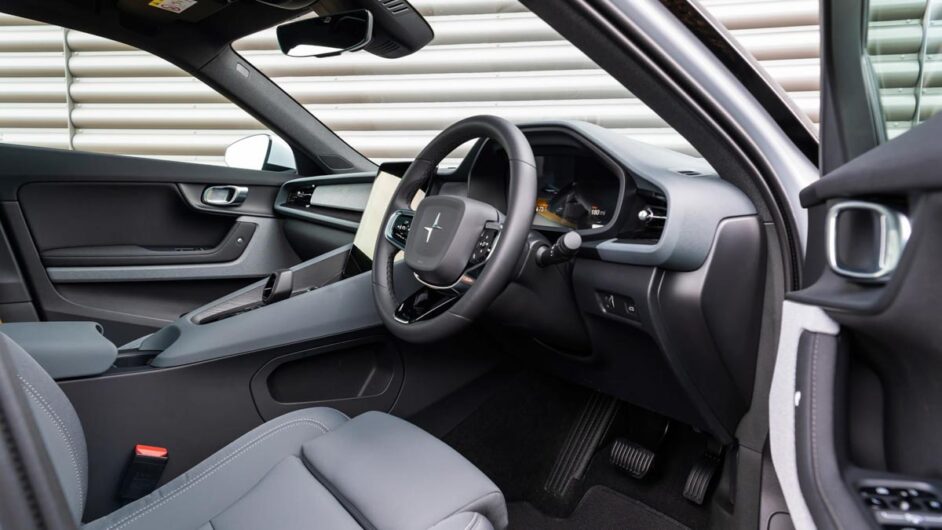
Prices, specs and rivals
The Polestar 2 will initially be launched in a single model, that’s available with or without an optional $6500 Performance Pack. Prices starts at $65,260 not including the $4000 government grant, and comes with a very long standard equipment list including a full active safety suite, a glass roof, heated and electric seats front and back, a premium sound system, active LED lights all around, 19-inch alloys – the list goes on. Rather than just settle on a roster of standard equipment borrowed from Volvo, the Polestar 2 also features a few of its own technologies too, including frameless side mirrors (that are excellent and should be fitted to all new cars), a top-level air filtration system (that says much about the world in 2020 doesn’t it?) and a brand new Google-designed operating system within the sleek infotainment screen.
The aforementioned Performance Pack version focuses on mechanical changes, although it doesn’t have any more power than the standard model. Included in the pack are larger forged 20-inch wheels, Brembo brakes, gold design details around the exterior and cabin, and a set of fancy adjustable dual-flow valve Öhlins dampers.
As for rivals, well, the Polestar enters the marketplace aimed well and truly at the Tesla Model 3. It’s $65k price point puts it a fair chunk above the standard Tesla Model 3 which starts at $52,860, and should instead be compared against the more comparable $61,345 all-wheel-drive Model 3 Dual Motor. Critical specs compare far more closely between the standard Polestar 2 and Dual Motor.
Established rivals with an all-electric powertrain are few and far between for the moment, but consider plug-in hybrid models and BMW, Audi and Mercedes-Benz all have models that could be considered rivals. Despite the rush towards EVs there isn’t too much in the pipeline to directly compete with the Polestar 2 and Model 3 either, with only BMW’s new i4 likely to be considered a direct rival.
Engine, transmission and technical details
The Polestar 2 is so far only available with the one powertrain option – a set of two electric motors, one on each axle, driving all four wheels via direct drive. Peak performance combined is rated at 402bhp, with 487lb ft available at zero rpm. The motors are driven by a segmented battery pack that runs along the floor, which has a total capacity of 78kWh. WLTP range figures stand at 470 kilometres.
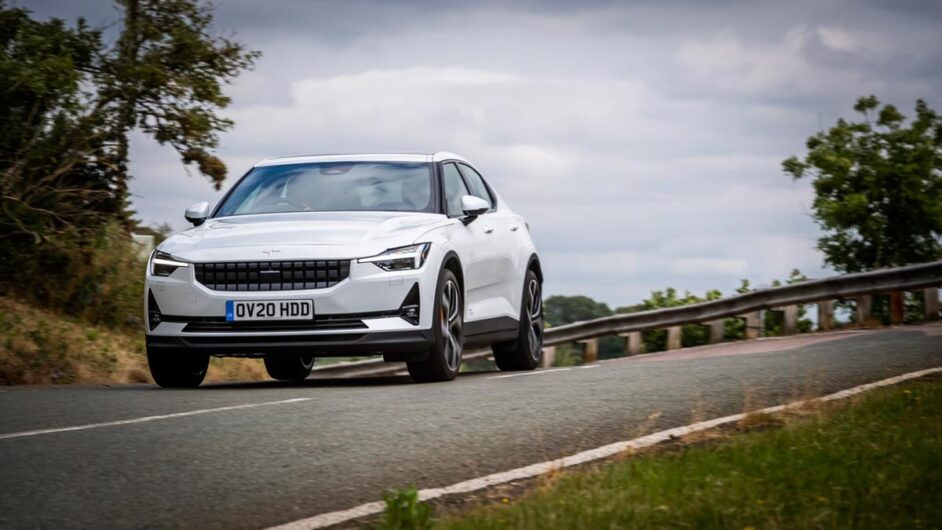
By comparison, the mid-level Tesla Model 3 Long Range Dual Motor has a similar set of specifications, with a slightly smaller 75kWh battery pack that again powers two motors that give the Model 3 a slightly higher total estimated range of 523 kilometres.
Under the Polestar’s skin is a modified version of Volvo’s CMP platform that’s so far only been used on the Volvo XC40. It’s proportioned differently though, at 4.6m long and 1.85m wide, making it around 100mm shorter and 100mm wider than the Tesla Model 3’s platform for comparison.
Although Polestar prides itself on being a performance brand, the Polestar 2’s overall technical make-up is pretty standard, with MacPherson struts up front and a multi-link rear. As mentioned earlier, specify the Performance Pack and it’ll receive manually adjustable Öhlins dampers and a chunkier brake package, but it still might be generous to call the Polestar 2 particularly ‘sporty’, although a Tesla Model 3 is hardly a delicate case of performance engineering.
Performance and 0-100 time
The Polestar 2’s performance is certainly all it needs to be to capture that impressive first impression of a well-endowed electric car. That is if they haven’t already driven a high-end Tesla. Like all electric cars, the acceleration is immediate and reassuring, even if it lacks the slightly unhinged feeling of a Model 3 Performance. On paper, it’ll reach 100kph in 4.7sec, and top out at 204kph (Polestar has decided not to enforce a 180kph speed limiter like Volvo has).
The mid-level Tesla Model 3 Dual Motor is slightly faster, with a 0-100kph time of 4.6sec, coming from comparable power and torque figures of 443bhp and 443lb ft, but is a fair chunk behind the headline Model 3 Performance, which knocks another 0.9sec off the 0-100kph time at just 3.7sec.
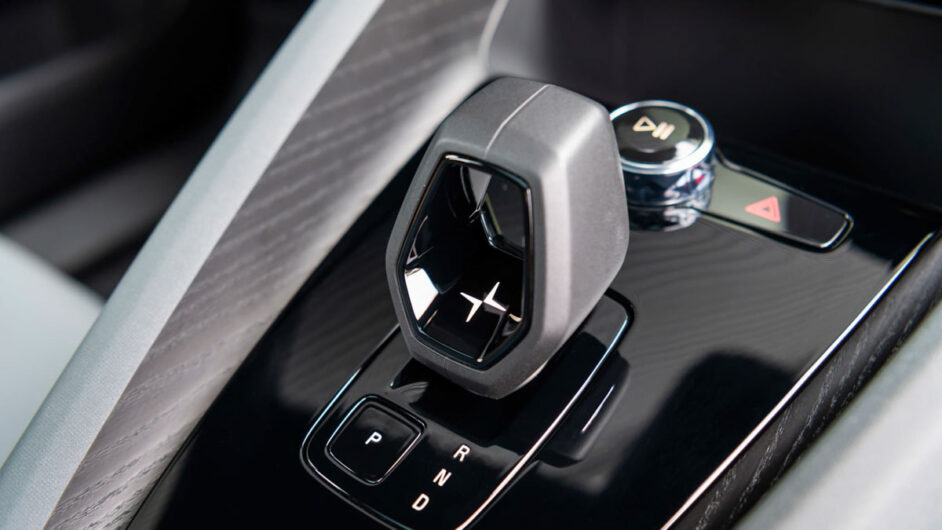
There are no performance-enhancing driver modes within the Polestar’s interfaces, although drivers can choose one of three levels of regenerative braking which vary between a Nissan Leaf-like one-pedal driving characteristic that will bring you to a complete stop, and right through to a coasting level that has no regen until you hit the brakes.
But while performance is impressive, it’s always measured and always under control. Even heavy throttle applications on broken surfaces don’t upset the Polestar 2’s composure, with seamless and trustworthy traction no matter the amount of throttle application. Put it into its ESP Sport mode, and it’ll allow even more liberal applications of power from all four wheels, revealing an even clearer window into the impressive balance that’s been engineered into the chassis. Much like a mechanically linked all-wheel-drive car such as an Audi or Subaru, power feels very diplomatically split between the two axles.
Ride and handling
Driving an electric car always feels odd for the uninitiated. The inherent lack of noise is constantly surprising every time you pull away, and when you are up and running the instant accelerative punch then hits you again. The thing that Tesla so cunningly tapped into was accentuating these alien first impressions by removing the traditional starting procedure and giving most models that trademark, and excuse the pun, electric punch. This is something the new Polestar 2 recreates, but with varying degrees of success.
Drop into the driving seat and the high scuttle and shallow windows make the cabin feel instantly enveloping, something very different from the open-air feeling of the Model 3. Like Teslas, Polestar has done away with any form of starter button, instead it’s as simple as stepping in and knocking the gear selector back (twice) into D and you’re off. There’s not even an electric handbrake, instead it automatically engages when you reselect P.
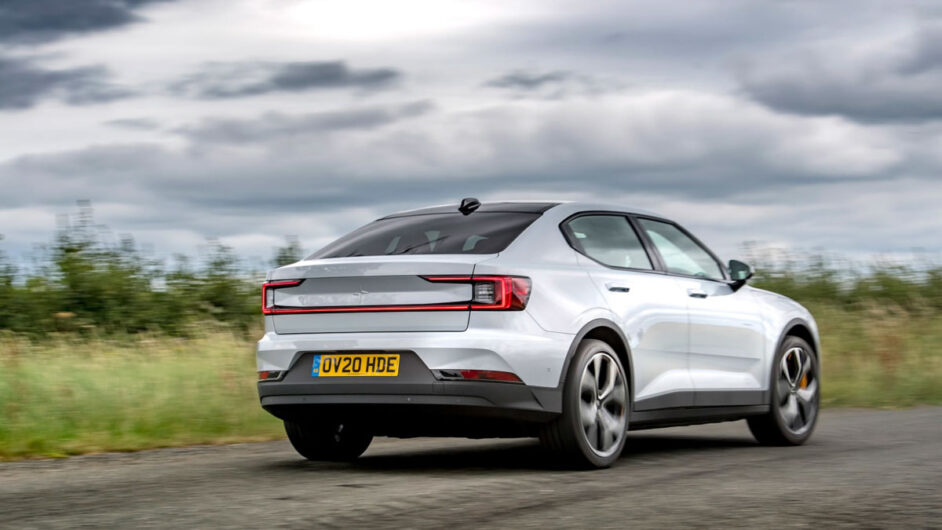
Models with the Performance Pack ride firmly, yet thanks to the underlying quality of the Öhlins dampers and some reasonable sidewall on the 20-inch tyres it doesn’t crash into intrusions on the road surface with quite the aggression you’re expecting it to. At road speeds, the Polestar 2 is about as undemanding as any modern passenger car too. It’s refined, but not eerily so, and easy to place on the road despite some less-than-ideal visibility issues behind you.
Push harder and the Polestar feels balanced and considered. Unlike the Tesla Model 3 (particularly in Performance spec), the Polestar 2 feels like a more in-depth interpretation of how to make an electric car feel dynamic and capable down a challenging road. That’s because it doesn’t seem to rely on a speedy steering rack or sticky tyre profile to ‘feel’ sporty, rather it relies on an inherent balance that’s surprising considering the Polestar’s XC40-derived chassis.
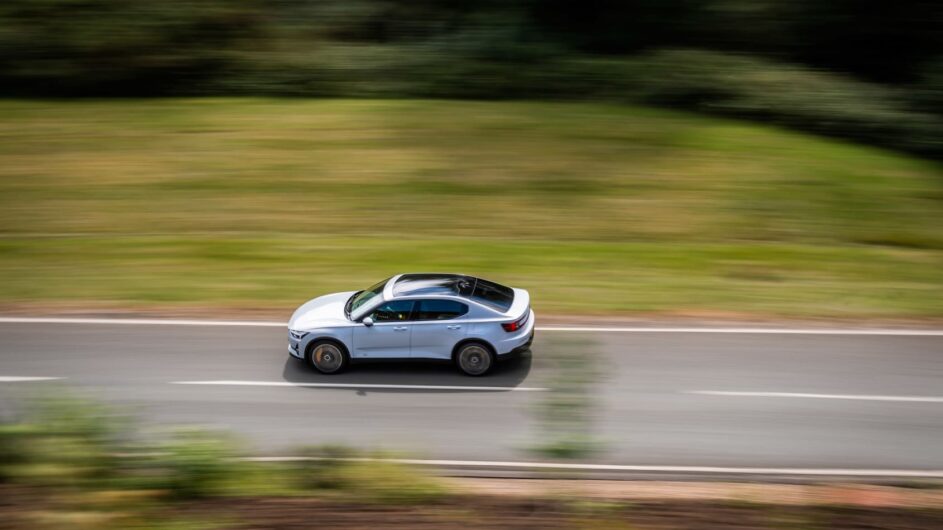
The steering is certainly an improvement on Volvo’s usually wooly rack so long as it’s in the firmest setting. This doesn’t exactly imbue the Polestar with anything resembling feel, but it’s accurate and confidence inspiring where so often many Volvo racks are not. It’s also set up to a calmer ratio than the hyperactive Model 3’s, and has a more reassuring weighting as the front axle loads.
The brakes are a point of contention as speeds rise though. Under normal driving circumstances a majority of the stopping power is drawn from regenerative braking, and so pedal feel is numb, but at least consistent. Get onto the brakes with force though and the blending between regen and friction braking is an issue. Push through the pedal travel with progressive force and both the feedback from the pedal and the braking performance itself doesn’t always correlate to your inputs.
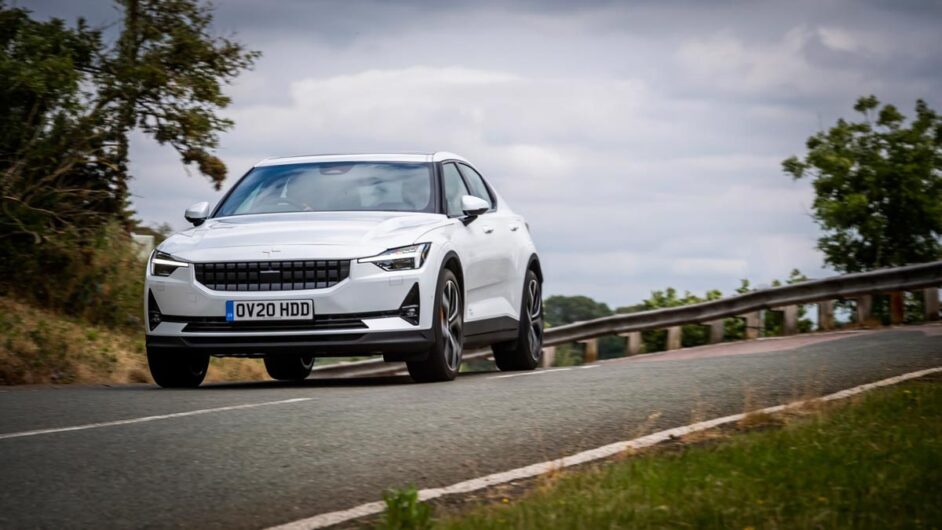
An overriding issue with the Polestar 2’s driving experience remains the pointless slightly tall ride height that does nothing for the handling, and little else aside from an invincibility when it comes to nose-in parking kerbs. This extra few inches of height just makes you feel a few inches away from the action, even if the centre of gravity is still low thanks to the flat-ish battery pack. The Polestar’s weight – 2123kg – is also conspicuous compared to that of similarly-sized IC performance cars; inertia is a cruel and ever-present mistress in many electric cars.
In this application, there has to be an inescapable comparison with a Tesla Model 3, so from a driving perspective, it’s as simple as one car feels like it was designed by a tech company and given the hardware to impress through numbers, if not exactly feel. The Polestar’s approach is far more… Scandinavian. It’s not quite as outrageous on first acquaintance, but has a more considered depth that gently lets you know what it’s capable of, rather than shouting about it in ‘Performance Mode’. This dynamic self-assurance is at odds with its form however; I just can’t help but wonder if it’d be a better car if it sat three inches lower to the ground.
L/100km and running costs
Polestar quotes an official WLTP range of 470 kilometres, which is a little behind that of the main competition, but an impressive number compared to the median of electric models currently on sale. Although our initial driving impressions were not long enough to accurately judge how realistic that figure is in the real world, after an afternoon of admittedly brisk driving the on-board computer did leave us with a rough 145-kilometre figure with 50 per cent of the remaining battery charge. Drive it sensibly, and keep to more stop-start driving and the range should correlate.
Maintenance, or rather the lack of it, is a key advantage of electric vehicles, and the Polestar is no different. Hardware around the Performance Pack’s Brembo brakes shouldn’t have too much of a detrimental effect on running costs either, thanks to the heavy reliance on regenerative braking.
Polestar also offers three years’ free servicing and maintenance as part of the package.
interior and tech
The Polestar 2’s five-seat interior is about equivalent in size to that of a BMW 3-series saloon, but with one or two caveats. The high scuttle and black interior trim can make the rear of the car feel quite tight, even with the standard-fit glass roof. Rear visibility is rather stingy too, and while the rear camera is clear and bright on the 2’s lovely display, a digital rear-view mirror as seen on various JLR products would be a welcome addition.
Dominating the driver’s aspect is a glossy upright tablet-style screen that mimics the path initially taken by Volvo and improves it with its Google-designed interface and clean graphics. Where a Tesla can feel stark, and almost submersible-like, the Polestar is more relatable to the mainstream, but with a definite edge in design, quality and operations.
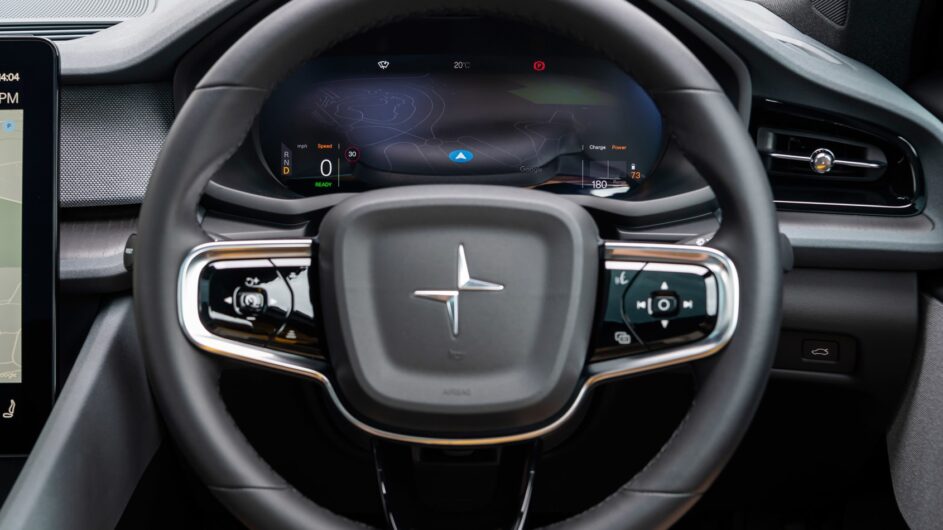
The material use is generally well-considered, with artful uses of fabric and timber trims on the main of the dash and encompassing centre console. Cast your eye lower down though and it’s not hard to find more questionable surfaces, but Polestar has certainly invested in using the right materials in the right places.
Design
The Polestar 2’s design might well be defined by the odd tall-riding hatchback proportion set it was given, but there’s no doubting the quality of execution and aesthetic sensibility. The surfacing is full, Teutonic in profiling and much more attractive in the flesh than in pictures. Especially around the rear end; instead of being dominated by the rear light bar, the Polestar 2 is instead defined by the aggressive rear arches and crisp detailing around the windowlines and bootlid that make it distinctive, without being particularly extroverted.
When specified with the Performance Pack and in a bright metallic finish, the Polestar 2 looks expensive without being showy, distinctive and different without jarring, and worth every penny of its price point.
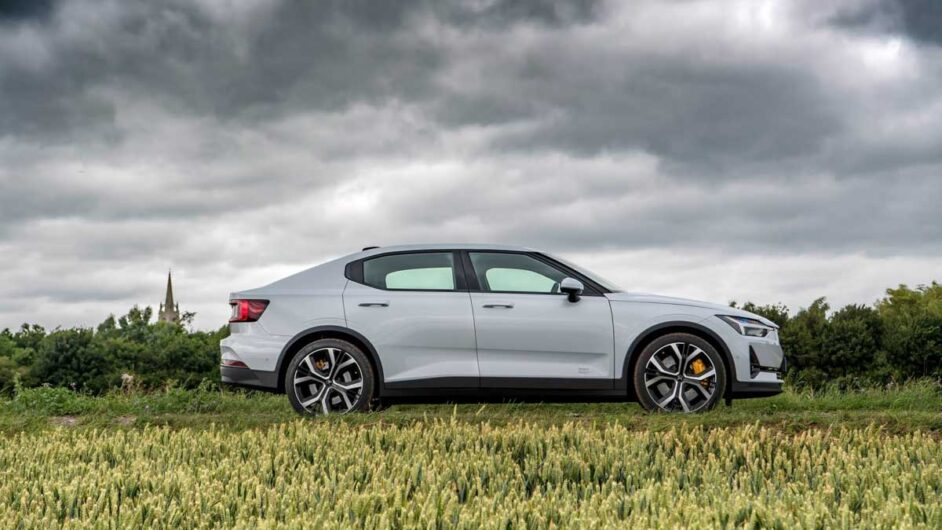
It’s been an impressive turn of events at both Polestar and Volvo in a design sense, with a clearly evident confidence in an aesthetic that’s perhaps as clear and authentic as it gets in the wider car industry right now. Like the rest of the package, the Polestar 2’s design is far more assured than its convoluted body shape would lead you to expect.
This article originally appeared at evo.co.uk
Copyright © evo UK, Dennis Publishing

